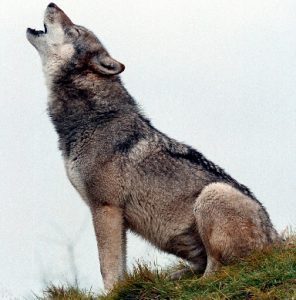Today I received an inquiry from one of the employees of a conservation group that is supporting the killing of the Profanity Peak wolf pack trying to understand some of the assertions I made in a recent post on the issue of wolves and public lands.
The employee was questioning my statement from a previous post (http://www.thewildlifenews.com/2016/09/06/the-profanity-peak-pack-lost-of-wolves-and-academic-freedom/) where I stated that livestock anywhere within a dozen miles of a wolf pack was essentially on top of the pack.
The writer suggested I “seem to be making two different and seemingly contradictory points. On the one hand you state that “There is no correlation between distance and depredation,” but then you also suggest that the presence of livestock anywhere within a wolf’s territory, whether 4 miles or 12 miles or 20 miles or 30 miles of wolves, poses a problem.”
They then went on to note that most of the packs in Washington live in proximity of livestock without conflicts, suggesting that livestock and wolves using the same lands are compatible.
The writer’s observations are correct up to a point. Just because there is livestock in a wolf territory does not automatically lead to wolf killing of livestock. But it does still cause conflicts for wolves in ways that we can surmise, but may be difficult to prove.
The presence of livestock affects wolves in more ways than if they are shot due to depredations.
First, domestic livestock consume the grasses and other plants that would support native prey like elk, thus reducing the overall fitness of elk, and perhaps even reducing their total numbers.
At least in some places during the summer, the vast majority of all forage on public lands is “allotted” to domestic livestock. A meadow that is grazed to putting green height, a common occurrence where livestock are on public lands, offers little food to wild ungulates.
Secondly, the mere presence of livestock can socially displace elk and other ungulates. When cows move in, the elk move out.
Even though wolves would prefer to eat native ungulates like elk and deer, they will choose to eat domestic livestock if the availability of these native species are more limited or difficult to locate in their territories. Wolf packs with pups are particularly vulnerable as the biomass needs of growing pups puts a real strain on the ability of the pack to provide sufficient food, especially in the summer months when native prey like elk are widely dispersed in the first place.
Here’s an analogy. I’m basically a vegetarian. I avoid eating meat. However, if I am visiting someone’s house and they serve up a meat dish or sometimes when I am traveling, it is so difficult to get a good salad or other vegetarian food that I will eat a chicken sandwich or something like that. I don’t always do this, of course. I sometimes suffer with the lousy iceberg lettuce salads you get in rural cafes. I.e. if I could get good vegetarian food, I would not eat meat. But if it’s too difficult to get vegetarian food, I consume chicken or fish sometimes. It’s the same for wolves. They prefer to eat elk and deer, but if for some reason there are not good choices for elk and deer, then they will resort to livestock, especially if they are trying to feed pups.
Even if wolves do not choose to eat livestock, and are not killed by state or federal agencies, they are still suffering. In other words, their overall fitness is reduced.
The wolves may have to wander further to find food–i.e. if elk have moved in response to livestock.. That means they may be traveling further and thus more exposed to poaching and accidents (crossing roads where they are hit by cars/trucks).
Because they have less native food to eat, they may go into winter in poor health and thus be more susceptible to disease like mange.
Or some of the pups may not get enough to eat and not survive and/or be weaker in the winter, and less able to contribute to the pack’s overall fitness.
Or they may have to “trespass” into the territory of other packs and suffer mortality from interpack conflicts.
Or due to their lowered fitness, they may not be able to defend their territory against other packs.
These are only a few of the ways that livestock presence can negatively impacts wolves–whether they consume livestock or not.
Worse, when groups put out range riders or people to scare wolves away from livestock (a well-intended idea) and otherwise affecting their normal movements, this is wrong.
Imagine what would happen if I were to choose to harass the cows and chase them away from the wolves to reduce predation opportunities, I would be arrested. But ranchers can chase or harass our wolves? To me, this is backwards.
Supporters of the ranching interests should not get hung up on distances like Washington State University did when it discredits wolf researcher Rob Wielgus by trying to make a point that cattle were released four miles from a wolf den instead of “on top” of the den. The mere presence of domestic livestock is damaging wolf habitat, not to mention all the other impacts that occurring–cattle are hammering riparian areas, polluting water, spreading weeds, compacting soils, etc.
It would seem that any environmental group would see that domestic livestock grazing is damaging and degrading our public lands. Should not conservation organizations be a supporter of the public–not private businesses using our public lands for their personal profit? Ask yourself that question.
Source: How livestock “damage” wolf packs | The Wildlife News
